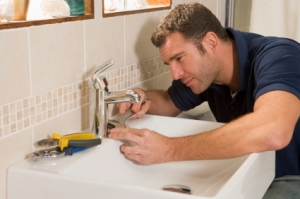A roof is a vital part of any house. It shields the structure from weather and protects your belongings during storms and other situations. However, any roofing is likely to wear out with time. When this happens, a roof replacement project becomes inevitable to resolve the issue. Still, many homeowners delay the replacement tenure due to the cost factor. However, according to Blue Collar Roofing in South Jordan there are a host of reasons how new roofing can present positive benefits to your home.
Reduces energy bills
An old or worn-out roof can impact the efficiency of your heating/cooling devices. Your roofing might be likely leaking cool air during summer and/or losing heat during winter. To keep you comfortable indoors, your cooling and heating devices might be overused.
This, in turn, will elevate energy consumption, and the result is higher energy bills. When you replace the roof, it won’t leak air in summer or lose heat during winter. Consequently, your HVAC devices won’t be overworked, and the result is low monthly energy bills.
Increase in home value
Even if the roof shingles aren’t damaged or worn out, it makes sense to replace the roof for that curb appeal. Most of the new roofing enhances the exterior of your house. Elegantly designed roofs look great and grab the attention of any person.
If you plan to sell your home soon, installing a new roof could form part of your tenure to sell the house. Combined with a paint job or new sliding, a new roof makes an older home look completely new. Such a situation is likely to attract a large number of potential buyers. So, you stand a chance to fetch a better price for your house.
Relief
Nobody wants the worry of their roofing’s ability to withstand harsh weather conditions and/or damages. Every time a storm hits, you may get scared if your roof will collapse, thus creating chaos here and there. New roofing gets rid of all these worries. Knowing that your roof is new and rock-solid provides immense peace of mind for many years.
Saves money on repairs
When the roof turns old, it gives rise to a lot of repairs every now and then. Repairs and maintenance could eat plenty of money and time on your end. Also, you’ll need to check the roof regularly to detect leaks and other issues. If you fail to do so, a minor problem can compound, inviting a major danger in the near future.
If you install new roofing through a reputed contractor, it’ll stand to harsh weather conditions without wearing out soon. Also, there will be no room for cracks or leaks due to professional installation. If you add up the money saved over time with the money expended on a new roof, you’ll conclude that changing the old roofing is a much better and affordable option.
Warranty and guarantee
Any old roofing gets worn out and outdated with the passage of time. There’s no guarantee when and how your rooftop will come off or stand the test of time. You’re at the mercy of luck with an old roof. If luck runs out, your roofing as well as the entire structure may come down during heavy rains or windy weather.
By changing the roof, you bring luck in your favor. Also, the chances of unfortunate incidents get drastically minimized. Most importantly, expert roofing contractors provide guarantees and warranties on their services. If something happens within the given period, you can call the professional to fix the issue without paying a single dime.
Ensures a major home renovation project
Do you wish to add dormers or skylights to your house? If so, you may have to modify the roof-line, which may not be possible with your existing roof. In such a situation, replacing the roof is the only option. By installing new roofing, you can carry out major remodeling projects and transform the decor of your overall home. Not to forget, you don’t have to expend too much on the project.
Final thoughts
Replacing your roof is beneficial in many cases. In addition to protecting your belongings and loved ones, new roofing presents a slew of benefits. Low energy bills, increase in home value, peace of mind, and renovation are a few of the highlights of changing the roof of your house. This is why it’s advisable to install new roofing to get rid of problems with your existing roof. However, make sure you turn to a credible roofing contractor to enjoy effective installation at the best possible price.
Tags: eco-friendly, energy efficiency, home improvement, repair, roof replacement, roofing










